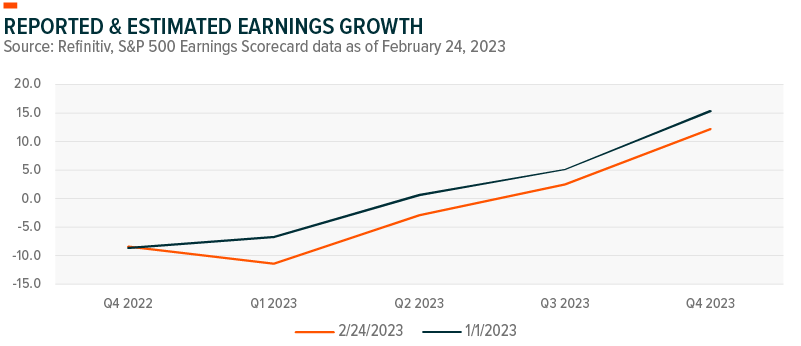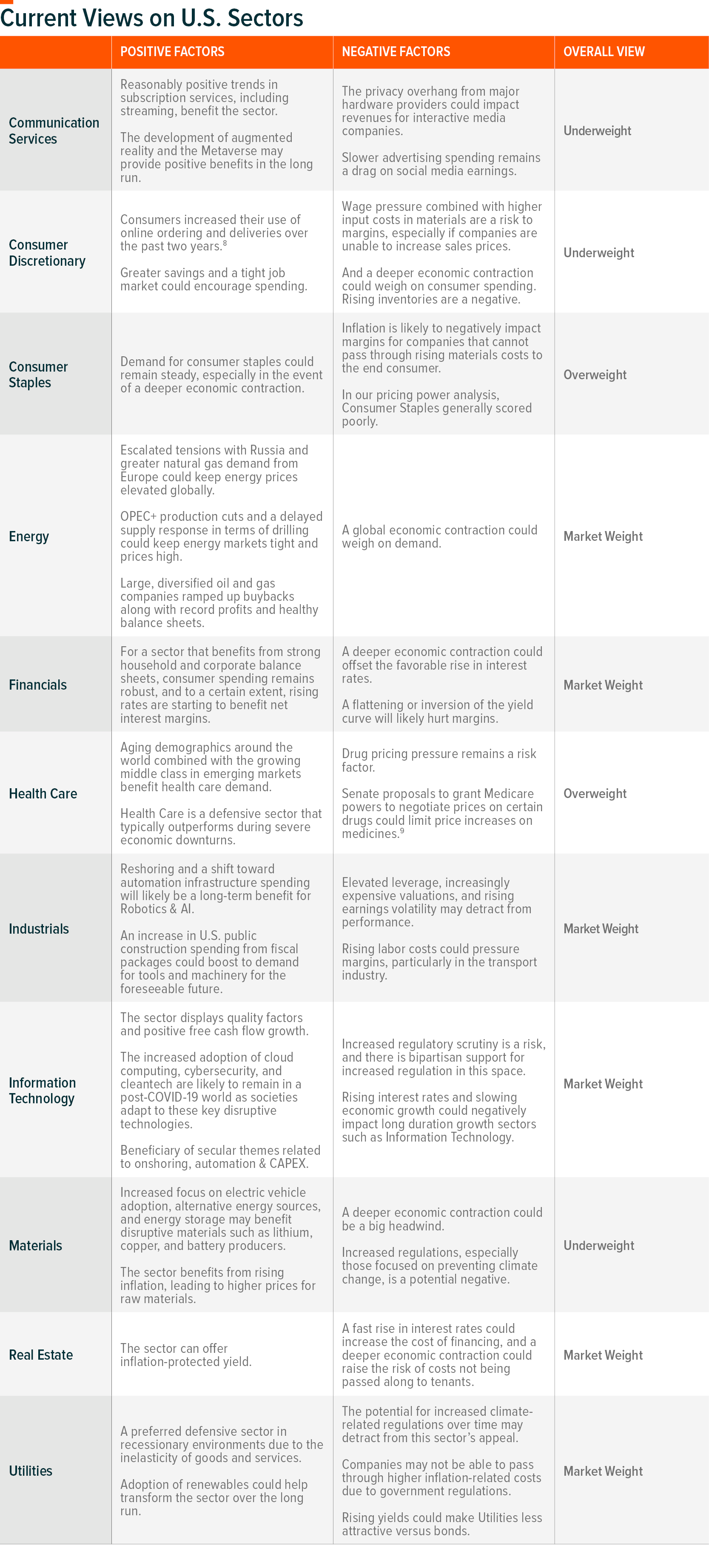Sector Views: Tech Talk
2023 started with a bang for the Information Technology (Info Tech) sector. The S&P 500 Info Tech sector ended January with a +9.3% total return and was basically flat through February.1 In January, slowing inflation data and excitement about Artificial Intelligence (A.I.) helped drive the sector higher. Whilst in February, inflationary forces from hotter than expected jobs numbers and potential higher for longer policy rates became headwinds to market performance, particularly to growthier areas. In this month’s piece, we will focus on the Information Technology sector, look at sector earnings and earnings dispersion across the industry groups, how margin growth compares across industries, and current sector headwinds and tailwinds.
Key Takeaways
- The Info Tech sector has the highest percentage of companies (82%) reporting earnings above estimates.2
- In Q4 2022, the Software & Services group led in top and bottom line growth benefitting from subscription revenue, while the Semiconductors & Equipment group lagged.
- Slowing sales and margin pressure is a potential challenge for the sector, while excitement around A.I. and CAPEX spending on automation is a growing opportunity.
Earnings Overview
As Q4 2022 earnings settle in, with about 95% of the S&P 500 index reporting, the Information Technology sector is reporting a year-over-year decline in revenues and earnings of -1.9% and -10.8%, respectively.3 For the sector, expectations for quarterly earnings growth throughout 2023 have also softened.4

Industry Group Performance Diverge
The three industry groups in the Information Technology sector are Software & Services (47% weight of sector based on market cap), Technology Hardware & Equipment (31%), and Semiconductors & Equipment (22%). In Q4 2022, the Software & Services group led in top and bottom-line growth +5.4% and +2.4%, respectively, while the Semiconductors & Equipment group lagged with -10.3% and -30.9%, respectively.5 Software & Services, which includes themes like cloud computing and cybersecurity, benefitted from subscription revenue.
Margins have diverged across the industry groups as well, as firms continue to cut costs. Operating margins, which factor in the variable costs like labor and production expense, declined most for the Semiconductors industry group (-5.8%), slightly declined for Technology Hardware (-1.2%) and remained flat for Software & Services (+0.2%).6 The Info Tech sector was among the first to remove excess labor capacity as labor growth in the sector was well above trend in the preceding years. This resizing is likely to come with short term costs but could put the sector in a stronger position longer term.
Fiscal stimulus from the $53B Chips Act allocated $39B in manufacturing incentives to bring production to the U.S. and $13B for R&D and training.7 Additionally, data center rollouts and interest in Artificial Intelligence (A.I.), fueled by the wide adoption of ChatGPT, provided tailwinds for this industry group. This was particularly positive for logic names and integrated circuit companies and likely aided in performance.
Volatility Ahead
Challenges
- Sales have historically been the main drivers of margins; we could see more margin pressure if demand weakens.
- Higher for longer policy rates and a higher forecasted terminal rate could impact valuations.
- A stronger dollar could impact foreign currency exposure.
Opportunities
- The AI Revolution – technological innovation is naturally deflationary as it reduces the input cost of producing goods. AI could lower labor costs as technology could fill labor gaps and increase productivity.
- Capital Expenditure (CapEx) Spending on Automation – CapEx is inflationary in the short term and deflationary in the long term, as benefits of efficiencies are realized. Despite CapEx being cyclical, after decades of underinvestment spending might be a necessity this time. Several reasons include persistent supply challenges, the need to spend on automation amid wage inflation, and the energy transition.
Innovation doesn’t stop. Companies in the Info Tech sector are able to adapt to changing market conditions to take advantage of new opportunities to innovate, become more efficient, and expand globally. Our sector views table provides more detail on sector positioning and the current tailwinds and headwinds for each sector.



